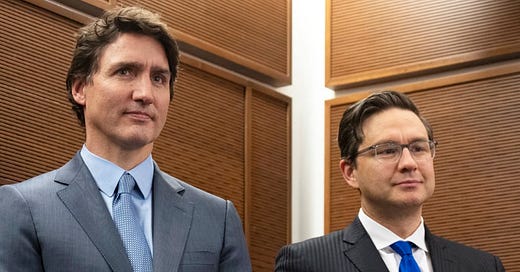Return of the Liberal-Conservative Party?
Justin Trudeau, not Pierre Poilievre, may have more to fear from a new centrist party
By now, you have probably heard of Centre Ice Canadians. The group was co-founded a year ago by former two-time Conservative leadership candidate Rick Peterson. It made its debut as Centre Ice Conservatives, during the Conservative leadership process, holding a policy conference in Edmonton, followed by similar events in Halifax and Toronto. It publish…
Keep reading with a 7-day free trial
Subscribe to In My Opinion to keep reading this post and get 7 days of free access to the full post archives.



